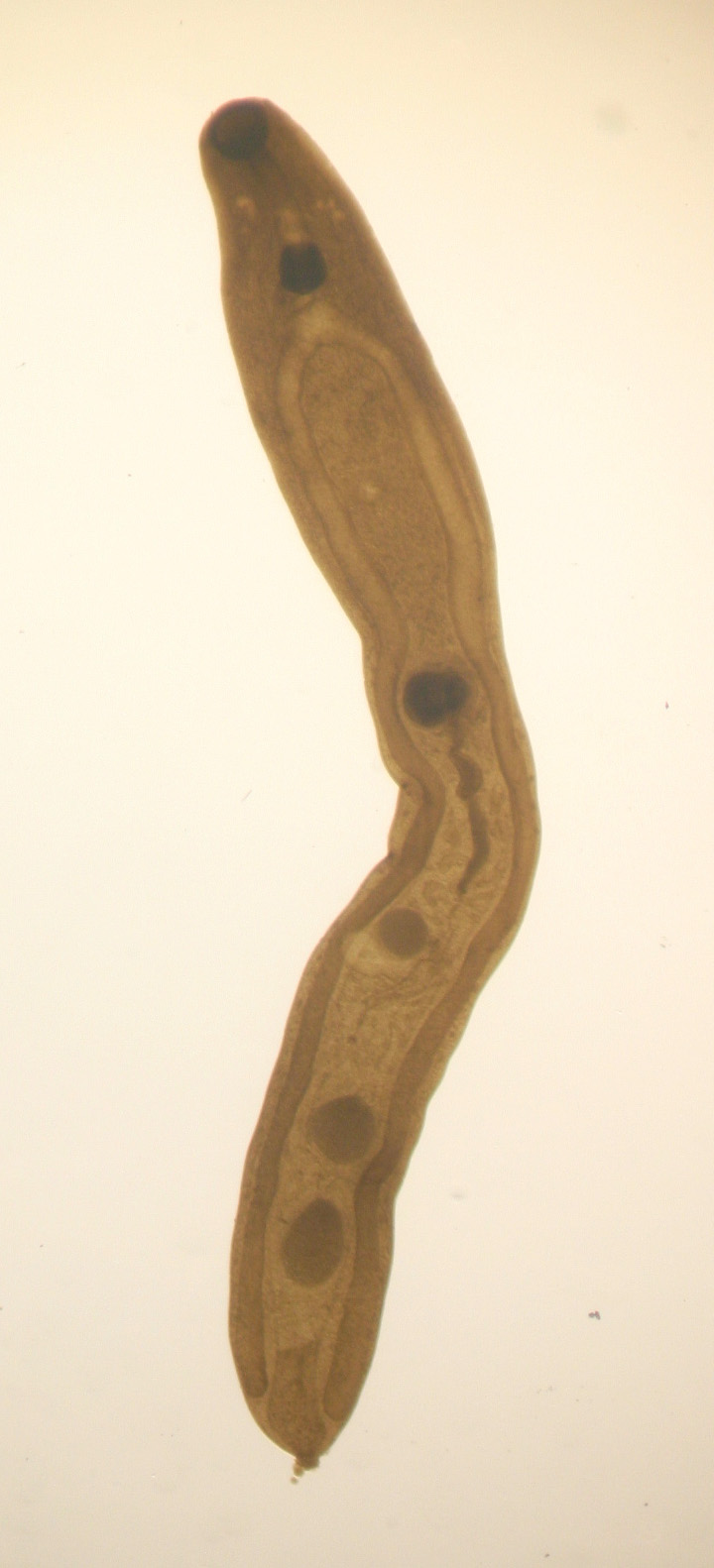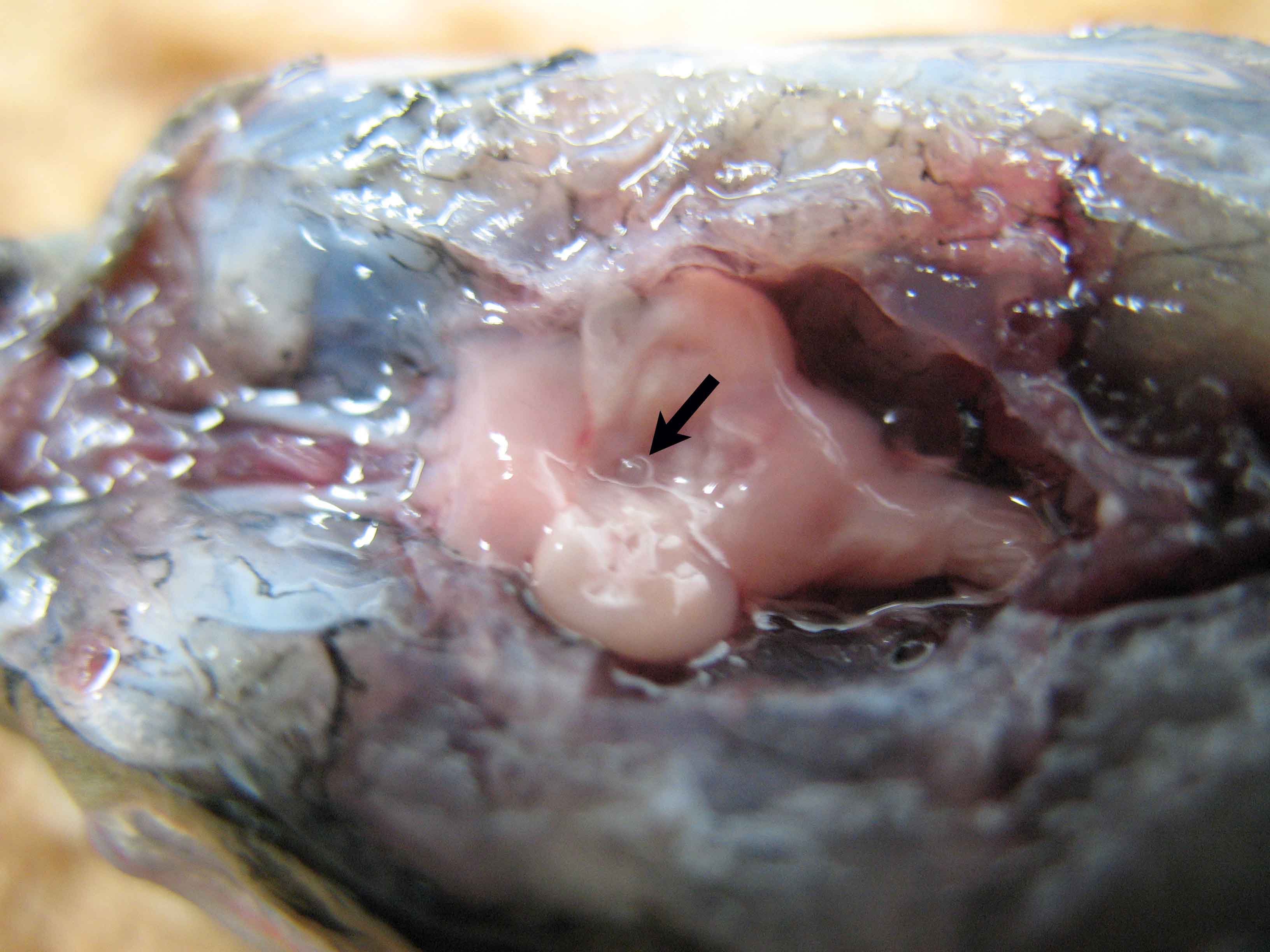


| Parasite | Galactosomum sp. |
|---|---|
| Taxonomy | Plathyhelminthes, Trematoda, Opisthorchiida |
| Hosts | Yellowtail (Seriola quinqueradiata), tiger puffer, (Takifugu rubripes), Japanese striped knifejaw (Oplegnathus fasciatus), Japanese anchovy (Engraulis japonica), Silver-stripe round herring (Spratelloides gracilis), Japanese jack mackerel (Trachurus japonicas) |
| Disease name | Trematode whirling disease |
| Infection site | Interbrain |
| Clincal signs | Infected fish exhibit whirling behavior near the sea surface, but no external abnormalities are observed. They have a spherical cyst of metacercaria ( 0.8-0.9 mm in diameter) in their interbrain (Fig. 1). In general, a single metacercaria cyst is observed per one fish (Kimura and Endo, 1979). |
| Parasitology | The excised metacercaria is 2.7-4.9 mm long (Fig. 2). The fish is the second intermediate host for the parasite and a black-tailed gull is the definitive host. The first intermediate host is not disclosed (Kamegai et al., 1982). |
| Pathology | Neurons around the metacercaria in the interbrain degenerate and become necrotic due to pressure of the cyst. This may cause the whirling behavior. Diseased fish will die in 1-2 days. |
| Health hazard | Since this parasite is not infectious to human, it is harmless in food hygiene. |
| Diagnosis | Fish showing a whirling behavior in endemic area is probably infected with this parasite. Confirmation of a metacercaria in the interbrain is needed to make a definitive diagnosis. |
| Other information | Infected fish may be easily eaten by black-tailed gull since the fish are whirling near the sea surface. This makes the parasite complete the life cycle efficiently. This disease is known to be endemic (a local disease), suggesting the limited geographical distribution of the definitive host (bird) or the second intermediate host (fish) (Yasunaga et al., 1981). This disease occurred from early August to early September, when water temperature is 24-27 C. (Yasunaga et al., 1981). This may be because of the limited release period of cercariae from the first intermediate host. It is recommended not to rear the fish in the invasion time of the parasite in endemic areas. |
| References | Kamegai, S., N.
Yasunaga, S. Ogawa and S. Yasumoto (1982):
Galactosomum sp. from intestine of Larus
carassirostris from Nagasaki, Japan. Jpn. J. Parasit., 31, suppl., p. 31. (In Japanese) Kimura M. and M. Endo (1979): Whirling disease caused by metacercaria of a fluke. Fish Pathol., 13, 211-213. (In Japanese) Yasunaga, N., S. Ogawa, E. Hirai, K. Hatai, S. Yasumoto and H. Yamamoto (1981): On the marine-fish disease caused by Galactosomum sp. with special reference to its species and life cycle. Bull. Nagasaki Pref. Inst. Fisheries, 7, 65-76. (In Japanese) |
Fig. 1. A metacercaria cyst (arrow) of Galactosomum found in the
interbrain of tiger puffer.
(Photo by K. Ogawa (3))
Fig 2.. A metacercaria cyst of Galactosomum.